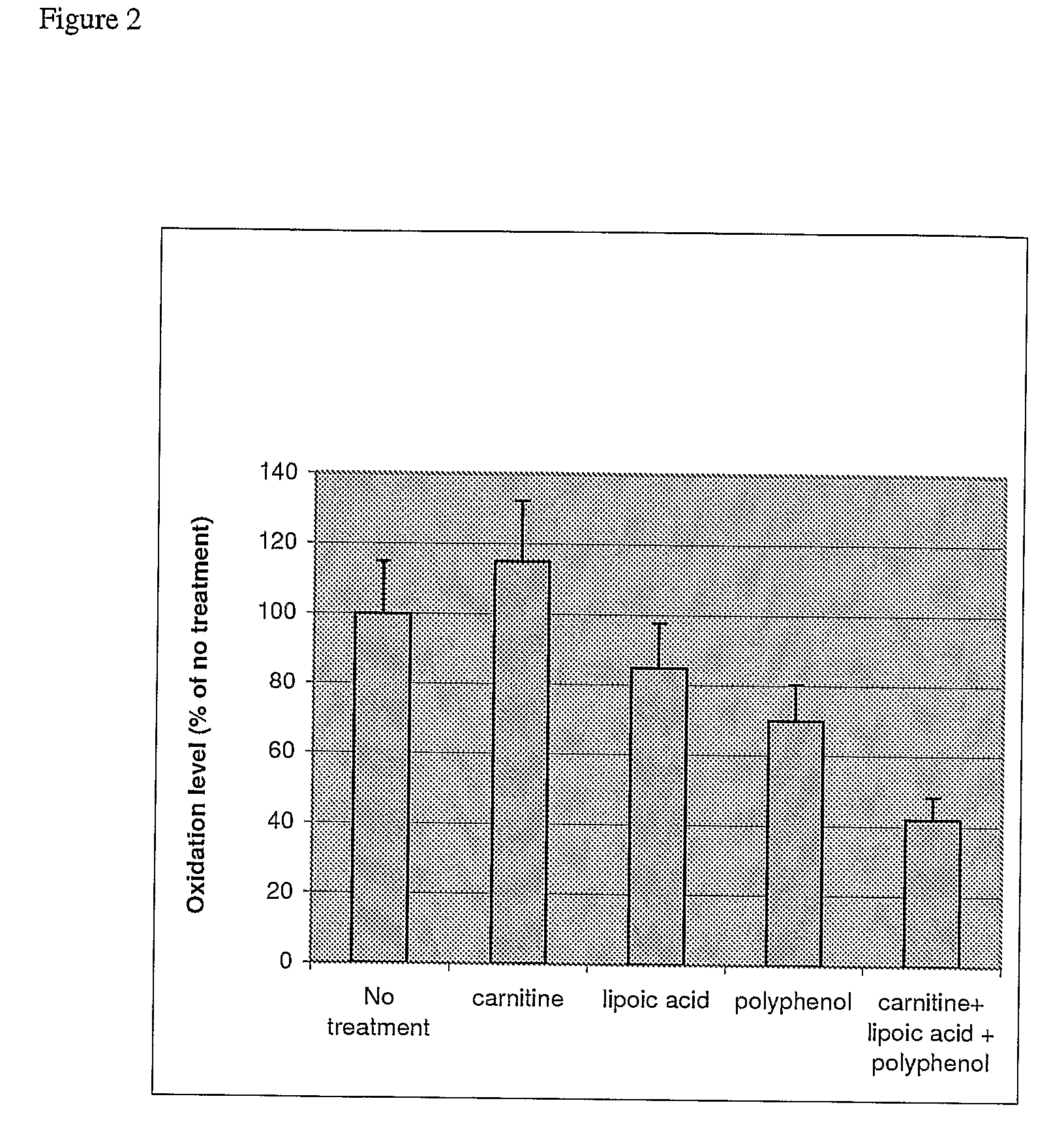Dietary Methods and Compositions for Enhancing Metabolism and Reducing Reactive Oxygen Species
a technology of reactive oxygen species and dietary methods, applied in the direction of biocide, drug compositions, metabolic disorders, etc., can solve the problems of reducing metabolism, reducing metabolism, and increasing the probability of gene mutation, so as to enhance metabolism and reduce reactive oxygen species
- Summary
- Abstract
- Description
- Claims
- Application Information
AI Technical Summary
Benefits of technology
Problems solved by technology
Method used
Image
Examples
example 1
Morris Water Spatial Memory in Rats
[0068]FIG. 1 of 2 depicts measurements of spatial memory in (Fischer 344 male rats) subjected to a water maze test, after treatment with carnitine, lipoic acid, and / or polyphenol. The rats that were treated with a combination of carnitine, lipoic acid, and polyphenol demonstrated greater than 50% faster mastery of the water maze than the rats treated with any of the components alone (approximately 38% faster for the combination over no treatment versus approximately 80%, 79% and 82% for carnitine, lipoic acid and polyphenol alone, respectively). The Morris maze task tests spatial memory by requiring rats to find a submerged platform in a pool of water using external visual cues (Morris, R. 1984; J. Neurosci. Methods, 11:47-60; Schenk, F. and Morris, R, Exp. Brain Res. 58:11-28, 1985). The rats in the experimental group (5 each) were fed either 0.5% (wt / vol) acetyl-L-carnitine in water, 1.0% (wt / vol) polyphenol in water; 0.2% (wt / wt) lipoic acid in ...
PUM
| Property | Measurement | Unit |
|---|---|---|
| fluidity | aaaaa | aaaaa |
| oxidative stress | aaaaa | aaaaa |
| energy demand | aaaaa | aaaaa |
Abstract
Description
Claims
Application Information
 Login to View More
Login to View More - R&D
- Intellectual Property
- Life Sciences
- Materials
- Tech Scout
- Unparalleled Data Quality
- Higher Quality Content
- 60% Fewer Hallucinations
Browse by: Latest US Patents, China's latest patents, Technical Efficacy Thesaurus, Application Domain, Technology Topic, Popular Technical Reports.
© 2025 PatSnap. All rights reserved.Legal|Privacy policy|Modern Slavery Act Transparency Statement|Sitemap|About US| Contact US: help@patsnap.com



